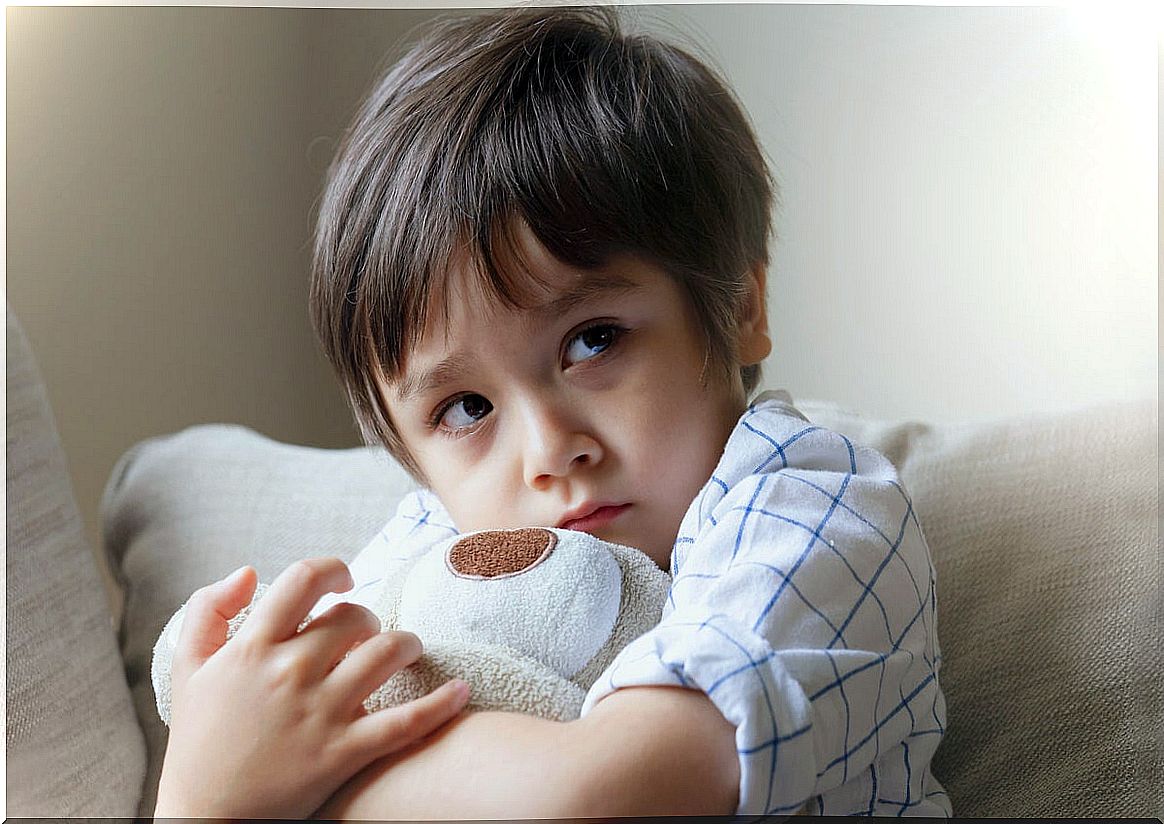Shyness Or Selective Mutism? Keys To Differentiate Them

Like adults, children also have their own personalities. For this reason, the behaviors that are typical of some minors are not expected in others, and this does not have to be a problem. There are children who are more open and outgoing and others are more reserved, both entering normality. However, when the difficulties to communicate or relate are great, we may be facing a disorder. This is why it is convenient to distinguish between shyness or selective mutism.
Many children are withdrawn in unfamiliar situations, in front of adults or in unfamiliar surroundings. Some of them may even choose to hide behind their parents and remain quiet despite being fully able to communicate.
This sign, which may simply indicate shyness, is also the main symptom of selective mutism, a condition that needs to be addressed. So how can we know if we are facing a disorder?

Shyness is not a disease
Before identifying the guidelines that allow us to differentiate between shyness and selective mutism, it is important to define both concepts, and make it clear that shyness is not a disease. It is a character trait that is manifested by a tendency to remain withdrawn in social situations with people of little trust.
The shy person may shy away from interaction with strangers and delegate the initiative in conversations. In addition, she is usually quiet and is not very expressive in her mimicry.
However, when he is in a familiar environment, with people with whom he already maintains a close bond, he can express himself without difficulty. For this reason, shyness is often typical of the first interactions and tends to disappear as the person gains confidence.
This tendency of character can already be identified in babies, since while some are open to exploring the environment, others exhibit greater inhibition in the face of the unknown. However, early experiences can shape this disposition by increasing or decreasing it.
In any case, despite the fact that shyness can generate difficulties in several areas by preventing the person from having normal relationships, preventing them from developing their full potential, it is not considered a psychological disorder.
Selective mutism as an anxiety disorder
For its part, selective mutism is considered an anxiety disorder. This usually appears during childhood or adolescence, and much less frequently, in adulthood. It is not a very prevalent condition, since it is estimated that only between 0.9% and 2.2% of minors suffer from it; however, it causes serious limitations in your day-to-day life.
The main manifestation of selective mutism is failure to speak in certain social situations in which interaction is expected. In this way, the person remains silent, generally expressionless and with a downcast gaze, when faced with certain individuals or social situations. On the contrary, in the rest of the contexts it can develop with total normality. Thus, the child may not speak at school but at home, or may be dumb to unfamiliar adults.
Generally, the situations in which selective mutism occurs are those that are perceived as threatening ; those in which the child feels that he can be judged, evaluated or criticized. Thus, such a high degree of anxiety and discomfort is experienced that speech is inhibited.
How to differentiate between shyness and selective mutism?
Self-insecurity and fear of social situations are present in both shyness and selective mutism. However, there are important differences to consider :
- The shy person may choose to remain quiet in social gatherings, but is able to speak up if necessary. In selective mutism, speech is inhibited and the person is unable to express himself.
- Shyness is typical of the first interactions with strangers and tends to be diluted when the person enters into confidence. When one suffers from selective mutism, the discomfort and anxiety do not diminish over time and the inability to speak in these specific contexts does not disappear.
- The level of anxiety experienced with selective mutism is much higher than with anxiety, just as the consequences are much more severe. In the latter case, school, work, social and personal performance can be seriously affected by the inability to interact.

The importance of an early approach
Shyness is a character trait that tends to remain stable, and although in certain circumstances it may fit in with what the environment demands – therefore, it is reinforced – it is possible that maturity and experiences help the person to acquire a greater self-confidence and feel more comfortable in social interactions.
However, selective mutism requires a more complete and in-depth approach. It is unlikely that a child will overcome selective mutism spontaneously, and if they do, they can go through years of great emotional suffering and enormous limitation in their daily lives.
Therefore, it is important not to underestimate the impact of this disorder, not to downplay it or confuse it with common shyness. Consulting with a professional and establishing an individualized treatment is the best way to prevent this condition from becoming chronic.









